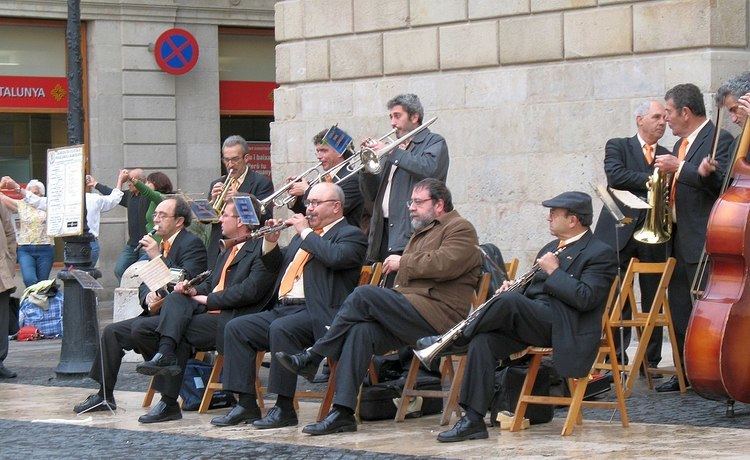 | ||
The cobla ([ˈkobːɫə], plural cobles) is a traditional music ensemble of Catalonia, Spain and in Northern Catalonia in France. It is generally used to accompany the Sardana, a traditional Catalan folk dance, danced in a circle.
Contents
Structure
The modern Cobla normally consists of 11 players with the following instruments:
There are small variations to this instrumentation in contemporary coblas: for example there is sometimes a third trumpet player.
The playing formation has two rows. The front row has (as seen by the audience from left to right) the flabiolist (with pipe and drum), the second and first tibles, and the first and second tenores. The back row, often raised, has the second and first trumpets, the trombone, and the first and second fiscorns. The double bass player, often standing, is on the right of the band.
History
Originally, the cobla was a 3-piece band:
The main instrument in the cobla, the Tenora, was developed around 1850 by French-Catalan luthier Andreu Toron, in Perpignan/Perpinyà.
The modern 11-piece cobla was developed by the Catalan musician Josep Maria "Pep" Ventura. He wrote over 200 Sardana compositions. There is a small street named after him in Barcelona, as well as a subway stop, presumably because of this achievement.
